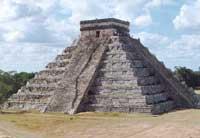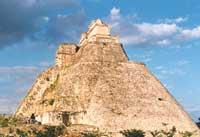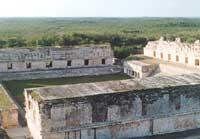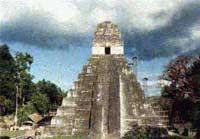Is the decadence of the Maya kingdom responsible for climate change?
2002/05/05 Mendiburu, Joana - Elhuyar Zientziaren Komunikazioa
The traces of the Mayan kingdom are attractive not only for tourists, but also for researchers. Many archaeologists from all countries have investigated their remains, but until recently no one knew whether there was a relationship between the decadence of the Mayan kingdom and climate change, and whether that relationship existed.

The Mayas constituted the most important civilization in America, which lasted about 2,000 years. They organized a very hierarchical society. The main activity was agriculture, especially maize and indiardos. And the architecture also had it very developed. Proof of this are the stone temples and the pyramids that captivate all visitors. Thanks to this wealth and knowledge, some forty cities reached the two million inhabitants. In the Mayan era three stages predominated, the last a new empire
All this information about the Mayans is the result of ancestral investigations, but in the footsteps of this kingdom there is still much interesting information. Proof of this is that a team of researchers from the university of Amsterdam published a couple of months ago the result of the research. In fact, they report that after the fall of the Mayan kingdom, the climate of southern Mexico changed. In particular, they point out that from this decadence the climate has dried up.
To reach this conclusion, the stones of the pyramids have not been analyzed. It is a work of greater precision than the pollen of the time. And the result has had great repercussions since the investigation of climate change has served to solve one of the great mysteries of archaeology.
Other conclusions Other conclusions:

Researching pollen seeds, the paleoecologists of Amsterdam have been able to define the climate of a time in some regions. In fact, some plant species only grow in certain conditions, so they are very useful to identify the climate.
The researchers have shown that in 1000 there was a climate change in areas located in southern Mexico and in northern Guatemala, where the Mayans lived. This occurred about 100 years after the fall of the Mayan kingdom.
The researchers believe that after the decline of the kingdom so well organized, the population destroyed part of the fauna and agricultural areas. This accelerated erosion and, consequently, volatilization, decreasing torrential rains.
To reach these conclusions, the data and seeds of the air bubbles trapped in the cubes of the South Pole have been compared. In fact, the investigations of the air bubbles in the South Pole allowed to know the amount of carbon dioxide in the atmosphere of the time.
On the other hand, paleoecologists have determined the growth of the plant in the last 450,000 years. For this purpose, the seeds of the last three million years discovered in a region of Colombia have been exploited. Thus, comparing the vegetable seed corresponding to each epoch with the concentration of carbon dioxide in the atmosphere, the evolution of the climate has been known.

What is clear is that the growth of plants was intimately related to the concentration of carbon dioxide in the air and that pollen has been an important element in climate studies. The analyses have shown that it not only changed temperature but also changed rainfall and times.
Research on pollen seeds has also provided information on the agriculture of the time.
Therefore, it has been proven that the communities that lived from hunting and capture, especially when the Spanish invasion began, had a rich agriculture before.
Published in the supplement Gara Station.

Gai honi buruzko eduki gehiago
Elhuyarrek garatutako teknologia





